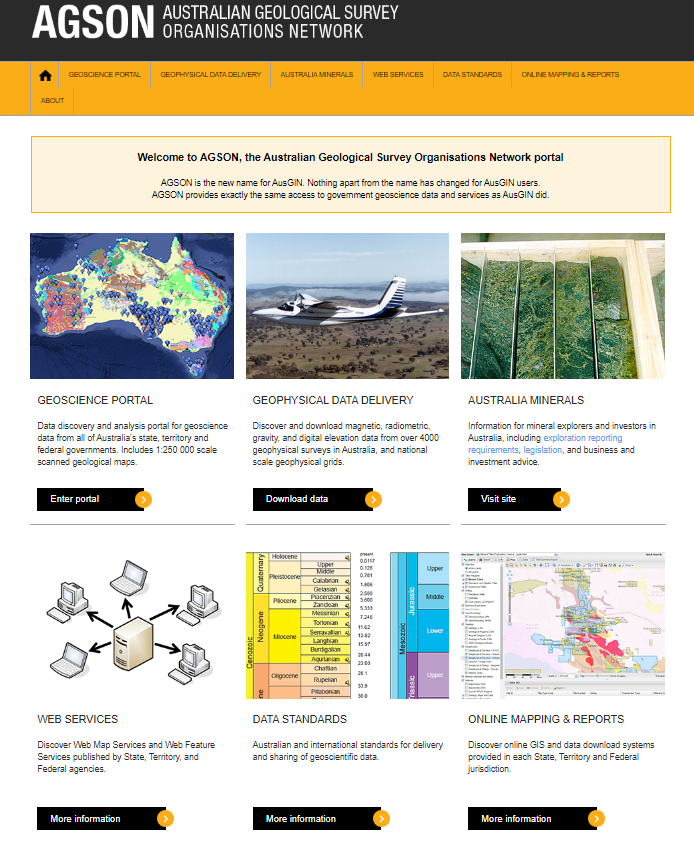The mining and exploration quest in and around New Zealand’s Waihi gold mine involves a high degree of social licence.
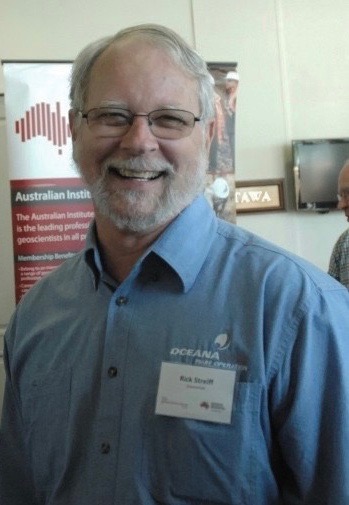 A consultant to OceanaGold Corporation (TSX & ASX: OGC) working on the Waihi operations, Rick Streiff, told attendees at the recent Gold17@Rotorua Conference that in Waihi the Martha open cut mine has operated in the town and that the latest underground operations go underneath some housing.
A consultant to OceanaGold Corporation (TSX & ASX: OGC) working on the Waihi operations, Rick Streiff, told attendees at the recent Gold17@Rotorua Conference that in Waihi the Martha open cut mine has operated in the town and that the latest underground operations go underneath some housing.
Streiff, who also undertook work for previous owner Newmont Mining, said it was clear from the outset that the mining companies needed to listen to the concerns of Waihi townsfolk and he believes this has been a successful operation.
There were some challenges for exploration including when operating teams needed to undertake CSAMT work to enhance underground targets that the wiring near houses did not create any problems. This took in looking out for dogs and cats.
There were noise issues that needed to be covered, including encasing drill rigs in containers to mute the noise and to ensure at night functions such as not using hammers on drill steels or rods.
Modern gold mining at Waihi began in late 1980s with a pit at Martha over the original underground mines and this was originally operated by a joint venture of US and Australian companies, then taken over by Normandy Mining before that big Australian company was taken over by Newmont, which in turn sold Waihi to OceanaGold in 2016.
Rick Streiff said that following on Martha’s develop the underground discoveries to follow included Moonlight-Favona, Trio and the 2009 discovery of Correnso, now the current mining focus.
Discovery of Correnso came about when exploration near the Reptile Vein came across an intersection that appeared to be “something else.” Ongoing exploration outlined Correnso as a significant target and there was excitement with an intercept of 11.5 metres grading 17 grams/tonne gold.
Broader regional exploration advanced originally by Newmont which undertook a remapping programme in 2008-09 identified a host of targets including the large WKP deposit which had seen holes like WKP24 outlining a wide zone grading 1.5 g/t and, later WKP35 which outlined an equally wide zone and a related narrow vein high-grade zone.
Streiff said modern mining at Waihi has seen about 2 million ounces of gold produced at Martha and roughly about one million ounces coming from underground mines. The ratio of silver varies, with Martha having had 10:1 silver to gold and Favona 1:1.
Ross Louthean
22 Feb 2017
This article was originally published in NZResources magazine and is reproduced here with the publisher’s permission which is gratefully acknowledged.
A well-known mining consultant said at the conclusion of the Gold17@Rotorua conference recently that contrary to many views in Government and industry observers gold exploration has been a successful business.
Julian Vearncombe of Perth-based SJS Resource Management, who was a principal organiser of the conference, gave the final presentation yesterday and pointed to some of the negatives that explorers have faced.
This included the decreasing probability of mineral discoveries with costs increasing, companies needed to make world-class finds, and a need to replace explorers with digital technology.
He said that contrary to these perceptions New Zealand and Australia through successful gold exploration had paradigm-changing growth in the 1980s and this was followed by consistent production.
Early drilling, he told delegates, was essential in all exploration.
Gold was being found at times when the gold price was low, and there was great success at brownfields exploration in NZ, Australia and Nevada.
Companies were finding gold in half-million ounce parcels and these can grow through brownfields exploration into world-class deposits.
In recent hears Australia has moved ahead of the once-dominant South Africa, the United States and Canada in production but more recently in terms of the gold price.
Since the 1980s Australia’s gold production has soared, helped by technological advances with oxide and refractory ore treatment. The national output peaked above 300 tonnes per annum in the early 2000s, dipped to about 220t but was now above 250t pa.
From the growth in production, the role of the gold price and its relation to the $A price against the $US, was shown in a graph, with dominant phases being in the 1979-83 period when the gold price peaked around $A1,600/oz and again between 2007-09 when it was in the $A1,700/oz range.
He cited some of the greenfield discoveries in WA once too small to mention included Jundee (1992) 1.3 million oz; Kanowna Belle (1987) 101,276 oz, Plutonic (1988) 515,600 oz, Frogs Legs (2000) 339,000 oz and Centenary at Darlot (1995) 365,000 oz. Most of these mines are going strongly and deeper today.
Ross Louthean
24 February 2017
This article was originally published in NZResources magazine and is reproduced here with the publisher’s permission which is gratefully acknowledged.
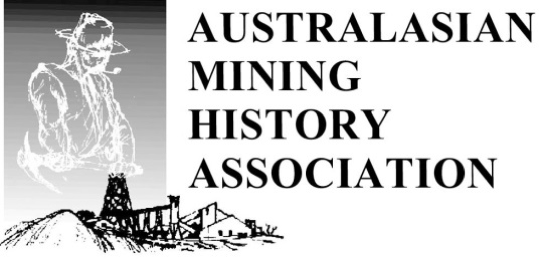
Are you interested in the history of: mining, mining engineering, metallurgy, mineral economics, mineral deposits or mining heritage?
Why not join the Australasian Mining History Association. See our website: http://www.mininghistory.asn.au/
Special offer to first 10 new members in 2017 includes back copy of 2016 issue of the Journal of Australasian Mining History.
The Australian Geoscience Council is planning a ‘Social media street party’ to be held on Geoscientists Day (this Sunday,
2 April) to celebrate geoscientists and their contribution to society; engage the Australian public in this fascinating field of science; and promote geoscience as a fulfilling career path.
Also aims to connect Australian geoscientists with their international colleagues, to share the importance of their work and discoveries to the world we live in.
Geoscientists Day (originally Geologists Day) originated in Russia to mark the resumption of geological fieldwork after the long, cold winter. In Australia, it also marks the resumption of fieldwork — paradoxically, following our long, hot summer.
Follows success of the Australian Geoscience Council’s inaugural #OzRockStocktake, held last year, in boosting awareness of earth science
via social media.
Simple steps to get involved:
As a geoscientist, use the hashtag #GeoscientistsDay to post on Twitter, Facebook, Instagram and LinkedIn your exciting geoscience research / work or a ‘selfie’ at an inspiring geological location or your real-life geological workplace.
As a member of the public, post questions for geoscientists or follow the conversations using the hashtag #GeoscientistsDay. Questions can cover anything geoscience related — from finding out about geoscience as a career to learning about a fossil or rock you’ve found — or bigger questions about geoscience and this exciting multi-faceted field of science.
Australia’s peak body for more than 8000 geoscientists is urging the geoscience community, both in Australia and globally, to “hammer keyboards, not rocks” this Sunday as part of an innovative ‘social media street party’ to celebrate international Geoscientists Day (Sunday 2 April).
“Our virtual #GeoscientistsDay party aims to connect all Aussies, from seniors to students, with the geoscience community via social media to talk anything and everything geoscience or earth science related” said the President of the Australian Geoscience Council (AGC), Dr Bill Shaw.
“We hope to highlight exciting research and developments in geoscience; celebrate the contribution of geoscience to society; and boost the profile of geoscience as an inspiring career path at a time when this major scientific discipline can offer so much to the world and a positive future.
“And as well as connecting geoscientists with the Australian public, we also hope our #GeoscientistsDay social media party will connect Australian geoscientists and their international colleagues to celebrate and share their groundbreaking research and work.
“Geoscientists play an immensely critical role in society as we face the big challenges of our time.
“They are right at the centre of efforts to sustain and advance our way of life, including by meeting the growing demand for the mineral resources that are used in everything from hospitals to smartphones, as well as mainstream energy production.
“They are also at the centre of efforts to ensure groundwater is safe and food production is secure; conduct research to better understand climate change; and help to develop a cleaner energy future.
“They ensure the tunnels you travel through and buildings you work in are not in geological danger zones; and they help to predict and manage geohazards like landslides, earthquakes, volcanoes and tsunamis.
“Given the very significant role that geoscience will continue to play in our world into the future, it is critical that organisations like ours highlight the rewarding nature of a career in this compelling field of science.
“We hope that #GeoscientistsDay will harness the power of social media to create interesting and enticing conversations about geoscience, and emphasise the crucial role of this major field of science to society.”
Geoscientists Day celebrations began in the USSR in the mid-1960s at the start of summer, a time when fieldwork can be undertaken after the long, cold northern winter. The first Sunday in April is celebrated as Geoscientists Day to recognise geoscientists around the world and their contributions to society. In Australia, April marks the start of the fieldwork season for many exploration geologists — paradoxically because it signals the end of the long, hot summer. As the wet season is finishing in Northern Australia and extreme high temperatures diminish across the Red Centre, many Australian geoscientists are getting ready to roll back into the field for geophysical studies, geochemical sampling and drilling programmes. We wish them luck in their endeavours in supporting Australia as a world-leader in resource development!

Australasian Exploration Geoscience Conference abstracts are required by 12 May 2017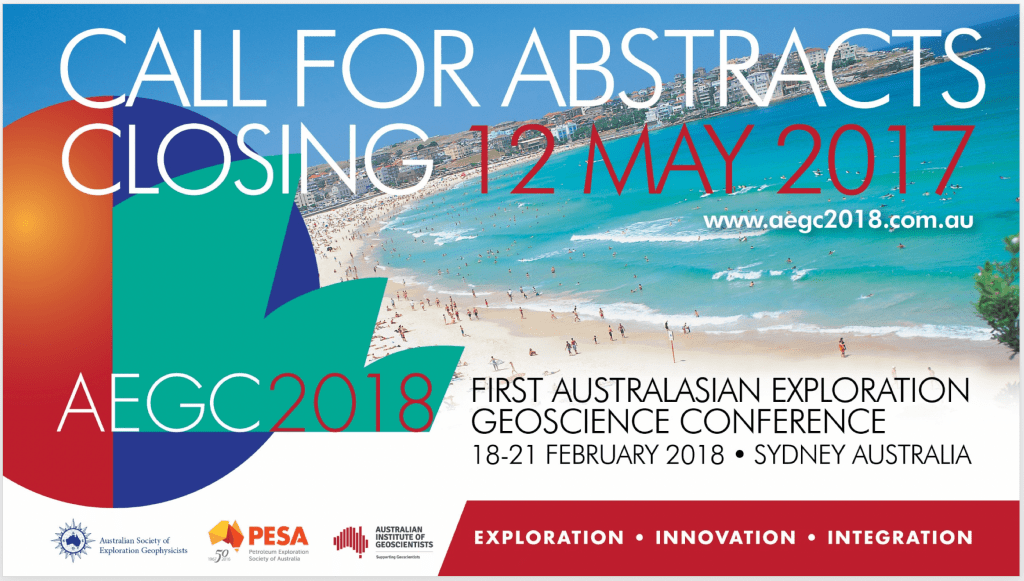
The Economic Geology Research Unit (EGRU) at James Cook University, Townsville, will be presenting the following 2 professional development training courses in 2017. More detailed information is on the EGRU website
18-28 April 2017
This course I in 4 modules and each is available for registration separately.
Module 1— Mineral geochemistry and its application in exploration
Module 2—Structural controls of mineralisation
Module 3—3D geological modelling of hard rock deposits using Leapfrog Geo
Module 4—Modelling the spatial distribution of mineral deposits
21-28 June face to face teaching
(20 June and 29 June travel days)
This intensive 8-day course is designed to provide geoscientists with essential exploration-related field skills in complexly deformed and altered rocks. Genuine ‘form surface’ mapping of contacts, alteration zones and structures will be integrated with paragenesis, geophysical interpretation and the use of alternate knowledge-based and data-based exploration models, including an introduction to the simple and
useful application of semi-quantitative prospectivity tools.
The course will be based in the Eastern Mt Isa Block, and assessment will be by field tests, maps, and submitted exploration target criteria. The course is offered to Minerals Geoscience Masters Students and as professional development training to the minerals industry. Previous mapping training/experience is essential.
The course will include
Please contact Judy Botting if you have any queries regarding the training courses.
JCU CRICOS Provider Code: 00117J
The AIG Professionals Subcommittee is a subcommittee of Council comprising:
AIG’s vision statement is “The AIG will strive to be the preeminent Australian professional institute in advocacy for, and public promotion of, all Australian geoscientists”. This is not a static statement. As the practice of geoscience evolves with changes in technology and changes in society’s expectations of professional practice, so must AIG change to preserve its preeminent status.
Benchmarking against the major international geoscience professional institutes shows AIG may be falling behind in its entrance requirements, expectations of Continued Professional Development (CPD) by members and governance.
The Professional Issues Subcommittee was formed at the Face to Face Strategic Planning meeting in June 2016. Its mandate was to create a “Road Map” to improve competency and increase professionalism (and the community perception of professionalism) of AIG members. The Subcommittee’s Charter is summarised in Figure 1.
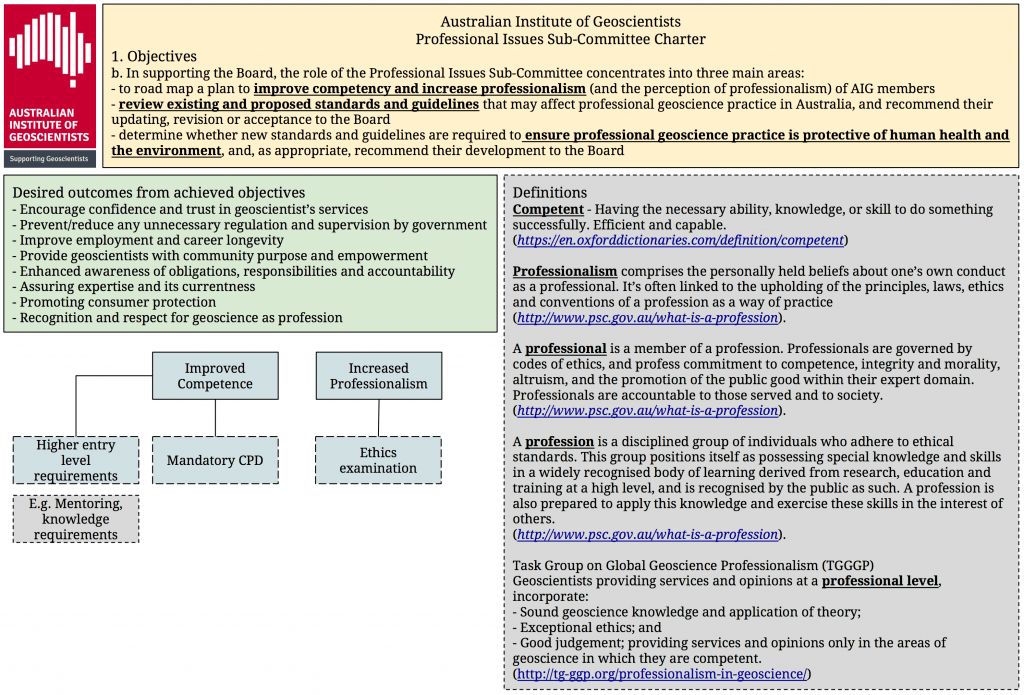
Figure 1. AIG Professional Issues Subcommittee Charter and Objectives
A PDF copy of Figure 1 (above) is available here.
AIG members will soon receive a link to an on-line survey prepared by the Professional Issues Subcommittee. We are seeking your input as we prepare the Road Map for presentation to the AIG Council. Your responses will assist the subcommittee in its recommendations to Council for AIG to demonstrate best practice.
The survey is seeking your input on the following issues:
The current minimum requirements for AIG Membership are a 3 year bachelor’s degree in the geological sciences and five years relevant professional experience that includes two years in which the applicant has been required to exercise professional judgement and discretion, and is supported by at least two AIG members with personal knowledge of the applicant’s relevant professional experience.
For industry employers, an Honours degree is the desired minimum qualification for graduate employment. This is because, under the modern degree system, most students are not exposed to work requiring problem solving and the exercise of technical and professional judgement until their Honours year. That is, until students complete Honours, they have little to no experience in the acquisition, assessment, compilation and interpretation of data, and little experience in technical writing and professional reporting.
Some institutions require applicants to submit a recent report and undertake a personal interview to demonstrate their functional literacy skills.
In many comparable jurisdictions (Canada, USA, South Africa and Europe) the minimum education requirement for professional institute admission is a 4 year Bachelor’s degree. AIG is currently not, but could potentially be at risk of losing its Recognised Overseas Professional Organisations (ROPO) status which allows our Members to identify as Qualified Persons or Competent Persons in these jurisdictions because of our lesser education requirement[1].
Should the education requirement be changed to an Honours degree or equivalent and should new applicants be interviewed and be required to submit a recent report (or other example of written, geoscientific work)?
Some professional organisations require applicants to complete a professional Law and Ethics short course, and pass an examination. The short courses are designed to increase knowledge of corporate law, stock exchange rules and other relevant legislation, and teach the obligations and responsibilities that come with adherence to a Code of Ethics. Typically these Law and Ethics short courses involve a seminar followed by an on-line exam.
AIG promotes the benefits of CPD to all members and requires Registered Professional Geoscientists to complete and document a minimum of 50 hours of CPD, on average, annually over a three year period. CPD is not a guarantee of competence. The community at large, however, sees a commitment to CPD as being at the core of an individual being able to describe themselves as a “professional”. Should AIG follow many professional organisations in other disciplines to make undertaking and recording CPD activities a requirement of membership?
Because geoscience is largely unregulated in Australia, essentially anyone can submit a geoscientific report to an employer, client, the public at large, or a government authority. This arguably undermines the practice of professional geoscientists and exposes the public to risks inherent in the misrepresentation and misinterpretation of geoscientific data and observations, not just confined to exploration results and mineral resource reporting. Should Members be encouraged to sign and seal all formal public documents that have been created by them in their professional capacity to employers, clients and the public? Should AIG promote the benefits of only accepting geoscientific reports prepared by members of a professional institute including AIG and AusIMM in Australia, or a Recognised Overseas Professional Organisation?
The JORC Code defines a ‘Competent Person’ as “… a minerals industry professional who is a Member or Fellow of The Australasian Institute of Mining and Metallurgy, or of the Australian Institute of Geoscientists, or of a ‘Recognised Overseas Professional Organisation’ … and … must have a minimum of five years relevant experience in the style of mineralisation or type of deposit under consideration and in the activity which that person is undertaking.” (JORC 2012) The key qualifier in the definition of a Competent Person are the words ‘relevant experience’. What constitutes relevant experience is left to the judgement of the Competent Person (CP) who must be confident of being able to demonstrate competence to a panel of their peers if called on to do so (convened by the AIG or AusIMM Complaints or Ethics and Standards committees)
Several reviews of JORC reports (AIG JORC Representatives, 2015 and Combes, 2016) have identified frequent shortcomings in:
Australia, arguably, benefits from a non-prescriptive standard for exploration results, mineral resource and ore reserve information to securities exchanges. This information, particularly for junior companies, is almost invariably market sensitive, making a high standard of compliance with JORC imperative if JORC is to be preserved, rather than replaced by more prescriptive requirements. There appears to be a compelling argument that our JORC reporting skills need improvement.
Should the definition of a Competent Person under JORC be changed to require Registered Professional Geoscientist (RPGeo) status (and Chartered Professional status for AusIMM members) to implement a requirement for CPD and a higher standard of independent peer review of the CP’s relevant experience? A change for Australian geoscientists would bring them into alignment with Canadian geoscientists who already need to be registered with the relevant provincial registration authority (PGeo). This could be seen to be strengthening the access to reciprocal reporting arrangements to the TSX and TSXV, by far the world’s largest sources of exploration and mining investment capital.
Geosciences are one of only a handful of fields of professional practice in Australia where some form of professional registration is not either mandated by government, or effectively essential due to industry imposed requirements (Waltho 2012).
The Professional Issues Subcommittee is concerned that regulation could be imposed on us, as illustrated by recently proposed Commonwealth legislation for Financial Advisors. The Commonwealth government has released an exposure draft of legislation to raise education, training and ethical standards for Financial Advisers, including a Tertiary degree, an entrance exam, mandatory CPD and an enforceable Code of Ethics for public comment and consultation. Geoscience could be considered to have escaped the attention of government regulators due to the limited exposure of the community to the actions of geoscience professionals. This could, however, change rapidly should there be a scandal relating to the share price of an exploration or mining company that could, for example, have wide reaching consequences for both direct and indirect investors. Many Australian’s superannuation investments have exposure to mining shares.
A number of Australian professional institutes are accredited through the Professional Standards Council (PSC) and regulated through State Professional Practice Acts. Information about this organisation is provided at http://www.psc.gov.au/
This accreditation provides limitations on the liabilities of an organisation and its members, and ensures that organisational self-regulation meets the current Australian standards applicable to other comparable professional organisations (such as Engineers Australia).
Accreditation of AIG by the PSC would require AIG to undertake the following (some of which are already within the scope of current activities):
Additionally there is a cost for PSC membership including a one-time fee of $35,000 and an annual levy equivalent to $50 per AIG member.
Should AIG investigate accreditation and regulation through State Professional Practice Acts?
AIG has experienced steady growth over the past 15 years with fee-paying Members doubling to about 2500. AIG’s management, however, continues to be managed by volunteer members with outsourced administrative (back office) support engaged on a contract basis. The Institute has no paid employees. If the above changes are approved, it is proposed that AIG will need to employ appropriately skilled and experienced staff to manage increased requirements for Membership, raising awareness of AIG’s activities and requirements of membership to universities, employers and regulators that will exceed reasonable expectations of volunteers.
The survey has only 9 questions and should take only about 10 minutes to complete. Please consider your responses – your opinions are important to us.
AIG JORC Representatives (2015) – Strengthening the integrity of Public Reports made under the JORC Code– a confidential green paper prepared for the Australian Institute of Geoscientists
Coombes, J. (2016) Scoping Study Review – Discussion Paper presented to JORC
JORC (2012). The Australasian Code for Reporting of Exploration Results, Mineral Resources and Ore Reserves, from http://www.jorc.org/jorc_code.asp
Waltho, A. W. (2012) It’s Time to Think About Professional Registration, from https://www.aig.org.au/its-time-to-think-about-professional-registration/
[1] To date, professional experience has been assigned greater weighting than education in assessing competence. We cannot, however, rely on the status quo continuing in view of developments overseas.
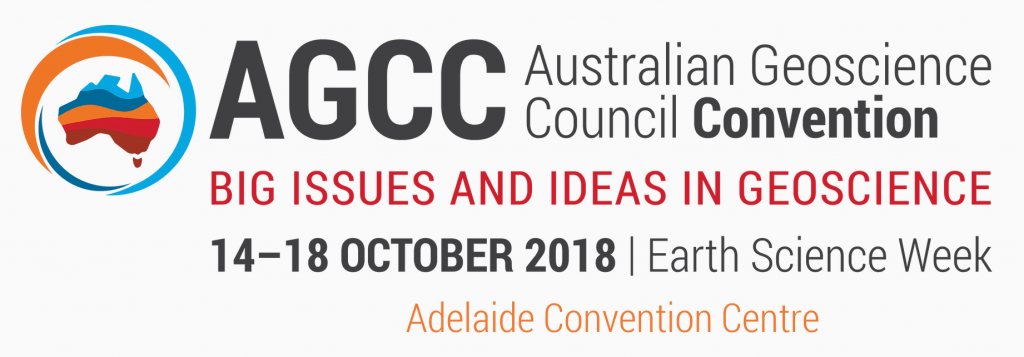
The Australian Geoscience Council will be hosting their 2018 Convention at the Adelaide Convention Centre, 14-18 October. Please visit the Convention Website for further information.
Keynote plenary sessions at the AGCC will address the major issues that impact Geoscience, such as Earth’s past and future climate; life origins and evolution; future resource security; geohazard risk and mitigation; and the future role of Geoscience in our society.
We will soon be inviting abstracts in the following five themes:
A range of sponsorship options are available to suit varying needs and budgets. For a copy of the Sponsorship Prospectus, please contact our Industry and Event specialist Jess Tuffley (jess@cm.com.au)
Please visit the committee page for a list of AGCC Organising Committee and Sub Committee Chairs

The European Federation of Geologists (EFG) and the Association of Greek Geologists (AGG) will coorganise the first EuroWorkshop on geothermal energy in Fira on the island of Santorini (Greece)on 18 and 19 May 2017.
EFG and AGG offer special support for ten young professionals. If you have less than 30 years and are a student or young professional in geosciences, you may apply for a grant of 180 EUR supporting your travel and accommodation costs.
If you are interested in this offer, please write a short story of maximum 400 words about “Geothermal – the Energy of the Future” and return it together with the application form to info.efg@eurogeologists.eu
The deadline for application is 31 March 2017 and we will inform you in the first half of April if you were selected for the travel grant.
Please note that Fira offers different possibilities for low cost accommodation (less than 50 EUR per night), such as guest houses or even a campsite. Another suggestion would be to look for accommodations in nearby villages. We advise to book as soon as possible because May is high season on Santorini and prices are evolving quickly.
More information about the EuroWorkshop on geothermal energy: http://eurogeologists.eu/santorini-2017/
The Australian Geological Survey Organisations Network (AGSON) Portal provides a data discovery and analysis portal for geoscience data from all of Australia’s state, territory and federal governments. It gives a single point of access to geological and geophysical information.
It provides the following:
Access to the AGSON portal is via www.geoscience.gov.au.
For more information, contact Ann Fitton.
